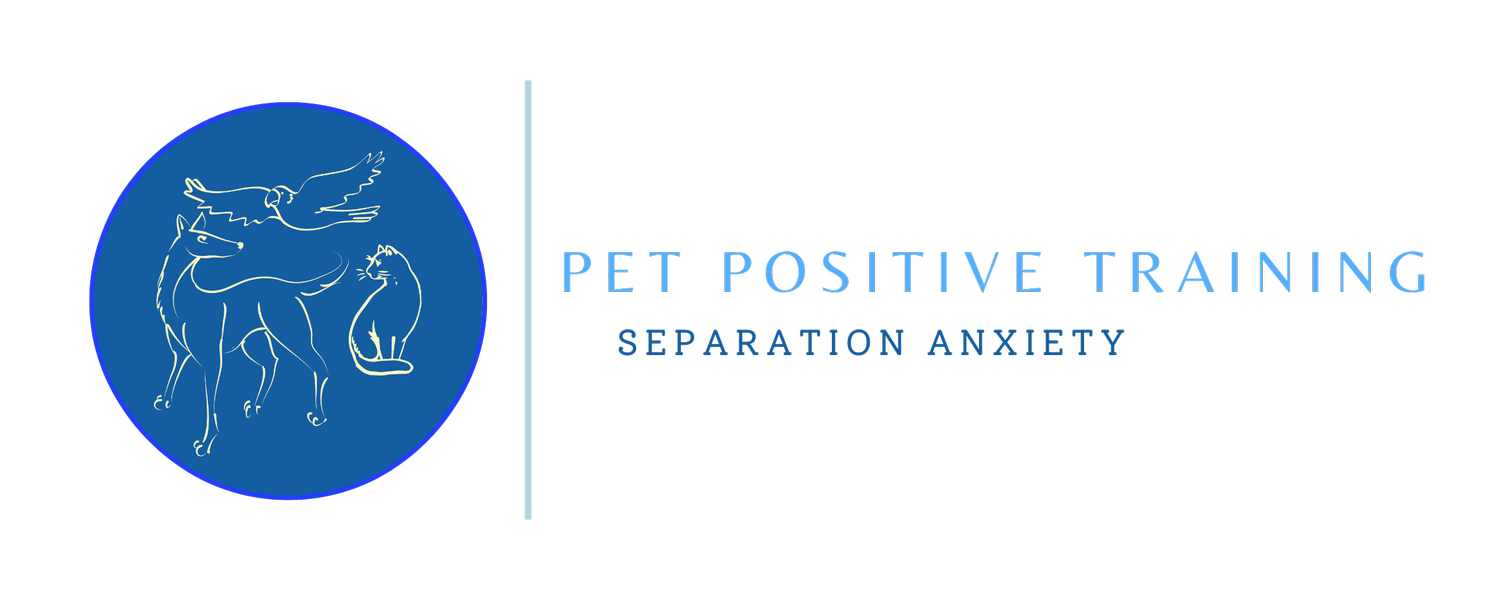Happily Ever After?
When is separation training done? Protocol complete? No more worries?
It Depends!
But as a general answer - once your pup has reached a target time and maintained it consistently for “a while”… with some possible exceptions.
Goals and Targets
Some of us may be aiming for 2 hours, some of us might want a full 8- to 9-hour work day of alone time. How long your training lasts will be affected by how long your target absence is, but specifically how your training is affected is not always easy to tell. Sometimes every minute of gained alone time will take that much time of training while another dog might find once 2 hours is comfortable, much longer times are comfortable too.
Each dog may also have goals that are more or less realistic for them. For instance, a dog with the ability to “hold it” who learns to pretty much sleep and relax may be fine for a full 8-hour work day. But some pups like my sweet foster Gracie, may have either medical, behavioral, or practical reasons why your target may be required to be shorter. Gracie, for example, has some medical incontinence issues which make long absences less practical - maybe in her long-term plan we will be incorporating a dog walker, sitter, or neighborly visits.
In short: It usually takes longer to train 8 comfortable hours than 2 hours, but both lengths of time may be realistic and achievable depending on the dog and the time you have to dedicate to training.
Within that goal, every individual dog will become comfortable at their own pace. Once you reach a target HOORAY! But reaching the target time isn’t actually the end of the protocol.
Maintaining Your Target
Separation training is NEVER linear. We have plateaus and regressions and that is normal and good. We might reach a target time at some point but still experience regressions below that or some unpredictability. What that means is that the dog is not ready to be left regularly for that target time.
For a very sensitive dog, it may be a good idea to wait 8-10 months of continued consistency before considering the target time fully reached where you don’t need to monitor too much and you really are graduated from your protocol. Of course that also depends on if there are plans to adjust any medications or management plans once the target is reached.
For a dog who has generally recovered time quickly after regressions and seems to stay very consistent, that might be more like 5-6 months of maintained target time.
Then… woohoo! WELL DONE! Big celebrations!
Make sure throughout this time your are easing back on monitoring your pup. You need to live life without watching the PetCam all the time! That does not mean never check - we all like to know a little about what is going on at home and some of the most amazing pet pics come from their comfy alone time. Sometimes it is a process to train yourself not to run your dog feed constantly.
Exceptions and Surprises
Things can pop up where a dog who has consistently been comfortable alone and separation anxiety feels like a thing of the past… suddenly has trouble again.
Common causes of sudden regressions/re-occurrence:
New medical issues
Moving to a new home
New nearby construction
A bad experience when alone (often noise or stranger-related)
Other life changes like new family members or loss of family members
A big change in routine or schedule
Aging and Canine Cognitive Dysfunction (CCD)
Note: The FIRST item on the list is a new medical issue. If there is a sudden onset of new behavior or recurrence of a previous behavior it is always a good idea to get a check up at the veterinarian. It may not be the alone time itself anymore, but something else that doesn’t feel good.
Sometimes we also can’t tell what caused a re-occurrence specifically and that is OK. What may bring your comfort is that we can help your pup feel better with the same protocol and same tools as before. You may feel comfortable starting the training again yourself or it may feel better to get help from a CSAT (again or for the first time).
Be Kind
Be kind to yourself and your pup - life happens and it can be unpredictable. Even if something feels “preventable” remember that separation anxiety and its regression or re-occurrence is not your fault or your dog’s fault. Separation issues are incredibly common and what we can do is gently and carefully help our pets feel better about alone time even if we start from a matter of seconds.
Yes it may take time… it may take months of training… but be gentle and patient. With this kind of anxiety to go slow is to go fast. In other words, going at your dog’s pace will let you help them that much faster.
Need Help With Separation Training?
If you need help reaching your target alone time again or for the first time, reach out!
I am a Certified Separation Anxiety Trainer and a Certified Professional Dog Trainer.
You can check out the Services or fill in the Contact Form.


